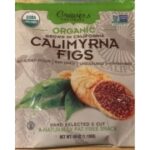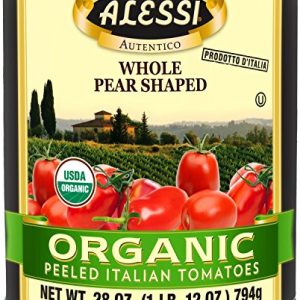Figs-Growers Favorite Organic Calimyrna Figs – higos secas
39.9 oz / 1.13 kg
- Description
Description
Calimyrna figs have light-green to yellow skin, as opposed to Mission figs, which are eggplant-colored on the outside. Calimyrna figs have a delicate, nut-like flavor. When dried, they turn golden tan. The fruit was originally grown in Turkey and dubbed the Smyrna fig, for the famous ancient Turkish city. When California growers began cultivating it, they altered the name to Calimyrna. Before eating or cooking fresh figs, rinse them quickly under running water and cut off the tough tip of the stem. Dried Calimyrna figs can be eaten out of hand and used in both savory and sweet cooking. Remove the stems, slit them open, and stuff them with sheep’s or goat’s milk cheese for an appetizer or dessert. Chop as you would other dried fruit and add them to baked goods like fruitcake or scones. A bit of warm liquid will soften dried figs, which can be simmered in a fruit compote or chutney. Or, soak the figs in warm water for an hour or so before adding them to stuffings and pilafs, where they add subtle sweetness and texture. Reconstituted figs are very different from fresh figs, and will alter a dish if substituted for fresh.*******Los higos Calimyrna tienen una piel de color verde claro a amarillo, a diferencia de los higos Mission, que son de color berenjena por fuera. Los higos Calimyrna tienen un delicado sabor a nuez. Cuando se secan, adquieren un tono dorado. La fruta se cultivó originalmente en Turquía y recibió el nombre de higo de Esmirna, por la famosa ciudad antigua turca. Cuando los productores de California comenzaron a cultivarlo, cambiaron el nombre a Calimyrna. Antes de comer o cocinar higos frescos, enjuáguelos rápidamente con agua corriente y corte la punta dura del tallo. Los higos secos de Calimyrna se pueden comer de inmediato y se pueden usar tanto en platos salados como dulces. Quitar los tallos, abrirlos y rellenarlos con queso de oveja o de cabra como aperitivo o postre. Pique como lo haría con otras frutas secas y agréguelas a productos horneados como pasteles de frutas o bollos. Un poco de líquido tibio ablandará los higos secos, que se pueden hervir a fuego lento en una compota de frutas o salsa picante. O bien, remoje los higos en agua tibia durante aproximadamente una hora antes de agregarlos a los rellenos y pilafs, donde agregan una dulzura y textura sutil. Los higos reconstituidos son muy diferentes de los higos frescos y alterarán un plato si se sustituyen por frescos.














